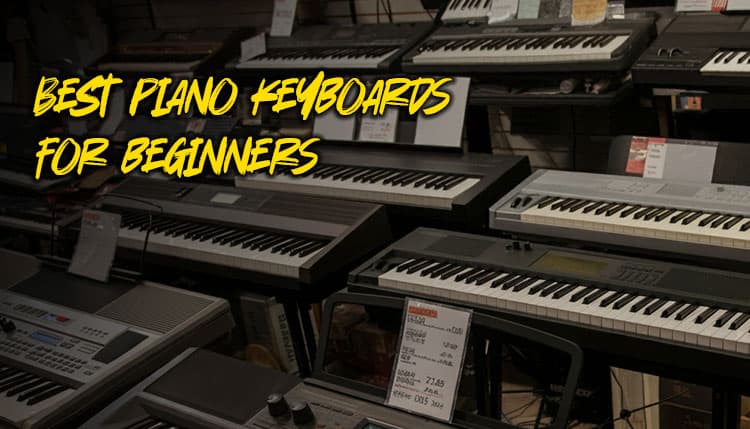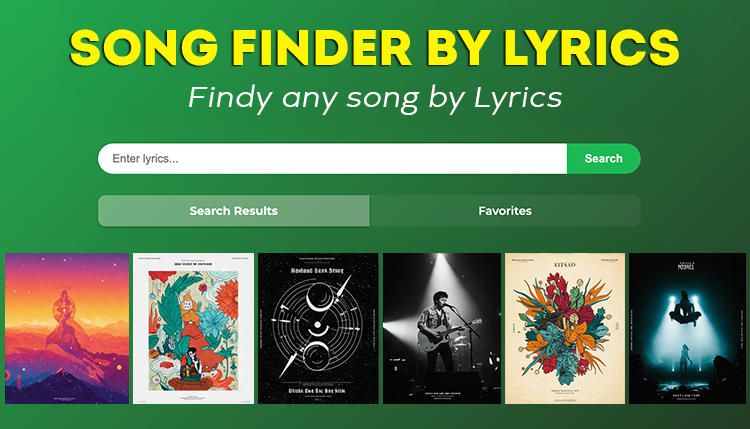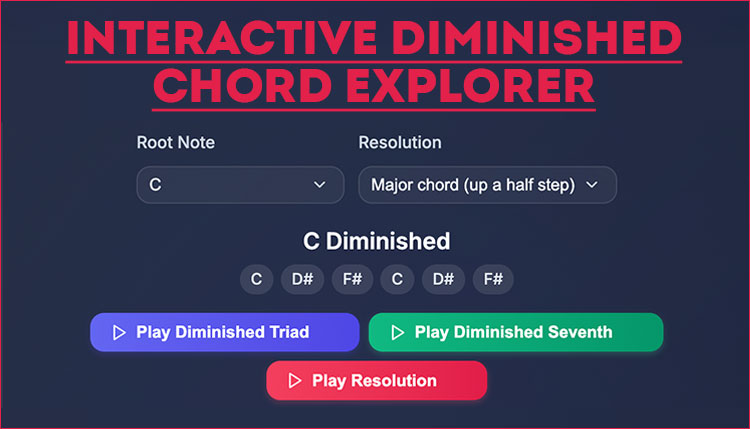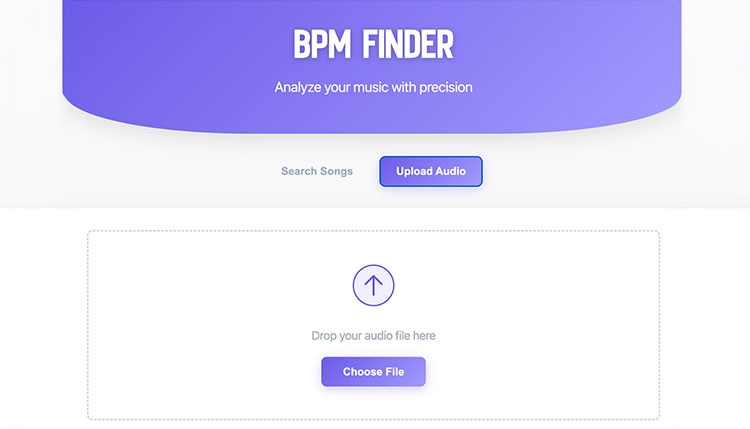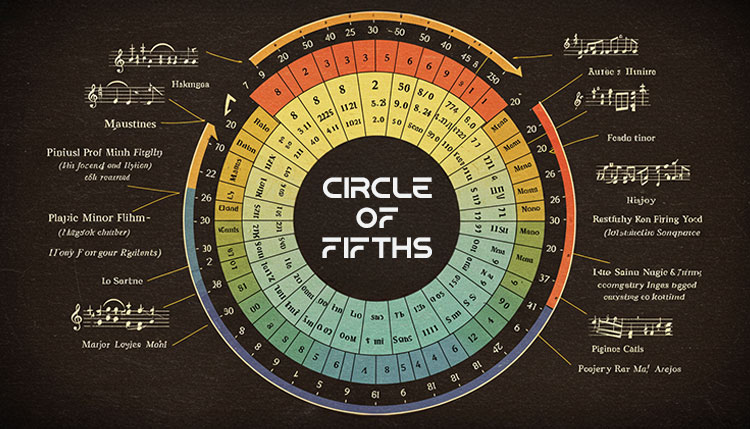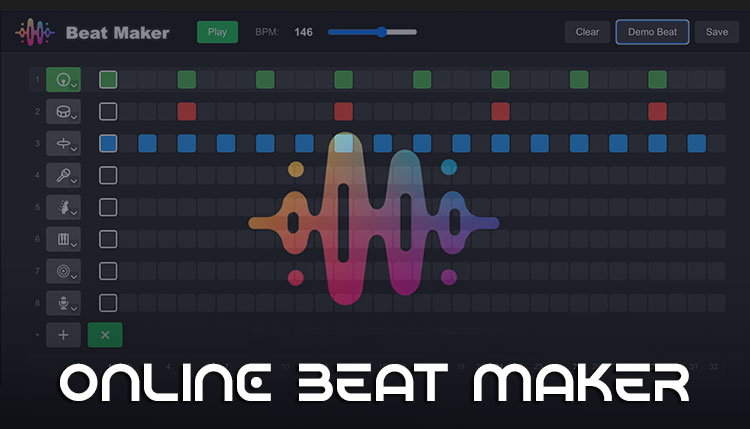Are you ready to embark on a melodious adventure? Welcome to the world of piano keyboards!
Did you know that learning to play the piano can improve cognitive function by up to 7%?
That’s right – not only is it fun, but it’s also great for your brain!
Finding the best piano keyboard for beginners can be overwhelming, but don’t worry – I’ve got your back.
In this guide, we’ll explore everything you need to know about selecting the best piano keyboard to kickstart your musical journey.
Let’s dive in and find your perfect match!
Understanding the Basics of Piano Keyboards
Let me tell you, when I first started looking into piano keyboards, I was totally overwhelmed!
There’s so much to learn, but don’t worry – I’ve got your back. Let’s break it down into bite-sized pieces, shall we?
First off, what exactly is a piano keyboard? Well, it’s basically an electronic version of a traditional piano. Instead of strings and hammers, it uses digital technology to produce sound. Pretty cool, right? I remember when I first played one, I was amazed at how realistic it sounded!
Now, there are two main types of piano keyboards: digital and acoustic.
Digital keyboards are what we’re focusing on here – they’re more portable, versatile, and usually more affordable.
Acoustic pianos are the traditional ones you might see in a concert hall. They’re beautiful, but man, they’re a pain to move!
When you’re just starting out, there are a few key features you’ll want to look for. Trust me, I learned this the hard way!
Touch sensitivity is super important – it means the keyboard responds to how hard or soft you press the keys, just like a real piano. This super important when learning piano hand position.
I once bought a cheap keyboard without this feature, and let me tell ya, it was not a fun experience.
Another biggie is weighted keys. These make the keys feel more like a real piano, which is crucial for developing proper technique.
I remember the first time I played on a keyboard with weighted keys – it was like night and day compared to my old one!
Here are some other features to keep an eye out for:
- Number of keys (61, 76, or 88)
- Built-in sounds and rhythms
- Connectivity options (USB, MIDI)
- Polyphony (how many notes can be played at once)
Don’t get too hung up on all the fancy bells and whistles, though.
As a beginner, you really just need something that feels good to play and has a decent sound.
The rest you can figure out as you go along.
Oh, and one last thing – don’t be afraid to try out different keyboards before you buy!
Most music stores are cool with you playing around a bit. It’s the best way to get a feel for what you like.
I spent hours in my local store before I found “the one” – the staff probably thought I was nuts, but hey, it paid off in the end!
Top 5 Best Piano Keyboards for Beginners
Here are five of the best Piano Keyboards for beginners with pros, cons, and unique features for each
1. Casio CDP-S160 88-Key Digital Piano Bundle
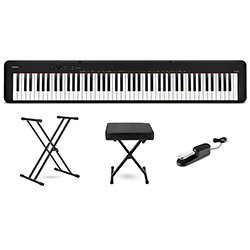
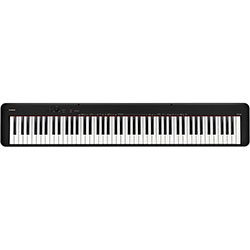
Description: This model combines portability with high-quality sound in an affordable package. It has 88 scaled, weighted keys and 10 different sounds.
Pros: Lightweight, portable, and offers a realistic touch. The bundle includes essential accessories for beginners.
Cons: Limited sound customization options and somewhat basic speaker quality.
Best For: Beginners who need a lightweight and versatile instrument for both home practice and travel
2. Yamaha P-45 Digital Piano Essentials Package
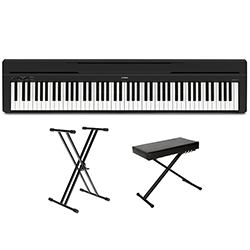
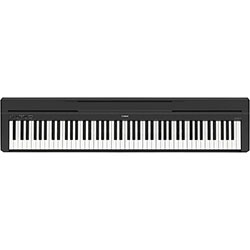
Description: The Yamaha P-45 is a widely recommended beginner digital piano with Yamaha’s Graded Hammer Standard weighted keys. It offers a selection of acoustic and electric piano sounds.
Pros: Realistic touch and sound with simple controls, perfect for new players. Yamaha’s reliability and piano tone quality are highlights.
Cons: Limited number of voices and sound effects.
Best For: New pianists looking for an authentic touch and sound without complex features
3. Roland FP-10 Digital Piano
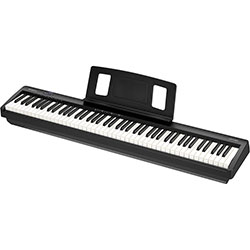
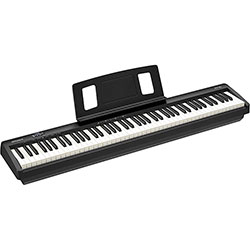
Description: Roland’s FP-10 brings their premium sound engine and progressive hammer action to an entry-level model. It also includes Bluetooth MIDI for connecting to learning apps.
Pros: Rich, detailed sound and Bluetooth connectivity for app integration. Compact design fits small spaces.
Cons: Few onboard sounds and only minimal control options.
Best For: Learners seeking advanced touch and tone in a compact design, particularly those interested in learning via apps
4. Williams Allegro IV with Stand and Bench
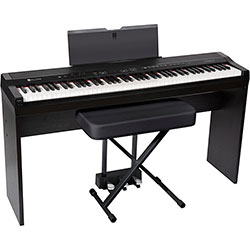
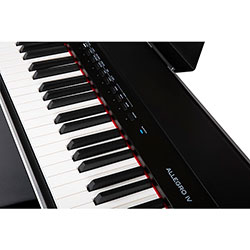
Description: This package includes an 88-key digital piano with a bench and stand, making it a complete setup for beginners. The Allegro IV also offers Bluetooth audio and MIDI for added connectivity.
Pros: Comes as a beginner-friendly package with multiple voices and Bluetooth functionality. Great for at-home practice setups.
Cons: Speaker quality may not be as high as some competitors, and keys are not fully graded.
Best For: Those needing a comprehensive setup for home practice and app-based learning
5. Yamaha P-225 88-Key Digital Piano
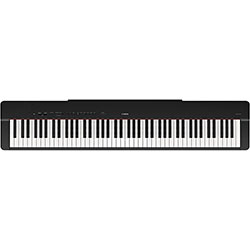

Description: The P-225 is a compact, user-friendly digital piano with Yamaha’s Graded Hammer Compact keys, providing realistic touch in a smaller format.
Pros: High-quality sound with Yamaha’s CFX Premium Grand Piano Voice, lightweight, and includes Virtual Resonance Modeling for acoustic-like resonance.
Cons: Limited sound choices and effects options.
Best For: Beginners and intermediate players needing an authentic acoustic feel in a portable, space-saving format
Best Piano Keyboard Brands for Beginners
Alright, let’s talk brands! When I first started looking into keyboards, I was like a kid in a candy store.
So many options, so little time (and money)!
But after years of playing and teaching, I’ve got a pretty good handle on what’s out there.
Yamaha
First up, we’ve got Yamaha. These guys are like the Rolls-Royce of keyboards.
They’ve been in the game forever and really know their stuff.
Their entry-level models are solid, and you can’t go wrong with something like the P-45.
Casio
Next, there’s Casio. Now, I know what you’re thinking – aren’t they the calculator people?
Well, yeah, but they also make some killer keyboards!
Their Privia line is especially good for beginners.
I actually started on a Casio myself, and it served me well for years.
Roland
Roland is another big player in the keyboard world. They’re known for their high-quality sound and build.
The FP-10 is a great beginner model that won’t break the bank.
I’ve played on some higher-end Rolands, and let me tell ya, they’re dreamy!
Piano Keyboard Prices
Now, let’s talk price ranges. You can find decent beginner keyboards starting around $200-$300. Mid-range options will set you back about $500-$700, and high-end beginner models can go up to $1000 or more.
It’s a bit of an investment, but trust me, it’s worth it to get something that’ll last.
When it comes to customer satisfaction, check out online reviews. But take ’em with a grain of salt, ya know?
Everyone’s experience is different. I’ve seen people rave about keyboards that I thought were just okay, and vice versa.
Here’s a quick comparison of some popular entry-level models:
- Yamaha P-45: Great sound, fully weighted keys, around $500
- Casio Privia PX-160: Excellent value, good key action, about $400
- Roland FP-10: Compact, high-quality sound, roughly $500
Remember, the “best” keyboard is the one that feels right to you and fits your budget. Don’t get too caught up in the specs – go with your gut (and your ears)!
Oh, and one last tip – if you’re really strapped for cash, don’t be afraid to look at used keyboards. Guitar Center used gear has some great options.
Just make sure you can try it out first. I once bought a used keyboard online without testing it, and let’s just say… it didn’t end well.
Essential Features for Beginner Piano Keyboards
Okay, let’s dive into the nitty-gritty of what features you should be looking for in a beginner keyboard.
Number of Keys
First up, let’s talk about the number of keys. You’ve got three main options: 61, 76, or 88 keys.
Now, when you’re just starting out and learning some piano songs for beginners, you might be tempted to go for the 61-key option. It’s cheaper and more portable, right? Well, yes, but here’s the thing – you’ll outgrow it faster than you think.
I started with a 61-key keyboard and was kicking myself within a year. If you can swing it, go for the full 88 keys. You’ll thank me later!
Key Action and Touch
Next up is key action and touch sensitivity. This is super important, folks. You want keys that feel like a real piano, not like you’re typing on a computer keyboard. Look for terms like “weighted” or “semi-weighted” keys.
And touch sensitivity? That’s what makes the sound louder when you press harder and softer when you press lightly. It’s essential for developing proper technique and expression.
I once played on a keyboard without touch sensitivity, and let me tell ya, it was about as expressive as a brick wall.
Built in Sounds
Now, let’s chat about built-in sounds and instrument voices. Most digital keyboards come with a variety of sounds beyond just piano – things like strings, organs, and even drums.
While these are fun to play around with, don’t get too caught up in having a billion different sounds.
Focus on the quality of the piano sound first and foremost. That being said, having a few extra voices can be great for keeping things interesting during practice sessions.
Polyphony
Lastly, let’s talk about polyphony. This is a fancy term for how many notes the keyboard can play at once.
As a beginner, you might think, “Well, I’ve only got 10 fingers, so why do I need more than that?”
But here’s the deal – when you start using the sustain pedal or playing more complex pieces, you’ll be glad you have a higher polyphony.
Look for at least 64-note polyphony, but 128 or more is even better.
Here’s a quick checklist of essential features:
- 88 weighted keys (if possible)
- Touch sensitivity
- Good quality piano sound
- At least 64-note polyphony
- A few extra instrument voices
Remember, at the end of the day, the most important thing is that you enjoy playing your keyboard.
All the fancy features in the world won’t matter if you don’t like the feel or sound of the instrument.
So take your time, try out different options, and find the one that speaks to you.
And don’t be afraid to ask questions – most music store staff are happy to help!
Learning Tools and Connectivity Options
Alright, let’s talk about the cool gadgets and gizmos that can help you on your piano journey! When I first started out, I had no idea how much technology could assist in learning. Boy, was I missing out!
Rhythm
First up, let’s chat about built-in metronomes and rhythm sections. These are absolute lifesavers, folks.
A metronome helps you keep time, which is crucial for developing a solid sense of rhythm. I remember struggling with a particularly tricky piece, and the metronome was my best friend. It’s like having a tiny, annoying drummer living in your keyboard – but trust me, you’ll grow to love it!
Many keyboards also come with rhythm sections, which are like having a whole band at your fingertips.
It’s great for practicing playing with accompaniment, and let’s be honest, it’s just plain fun. I’ve spent many a night jamming along with these built-in rhythms – it’s a great way to unwind after a long day!
Learning Modes
Now, let’s talk about LCD screens and learning modes. These can be super helpful for beginners.
Some keyboards have screens that show you which notes to play, or light up the keys for you to follow along. It’s like having a mini piano teacher right there in your keyboard! Some people swear by these features, especially when they’re just starting out.
Connectivity
USB and MIDI connectivity is another biggie. This allows you to connect your keyboard to a computer or mobile device, opening up a whole world of possibilities.
You can record your playing, use learning software, or even create your own music with digital audio workstations.
I remember the first time I connected my keyboard to my computer – it was like entering a whole new dimension of music-making!
Speaking of learning software, there are tons of great apps and programs out there that can help you improve your skills.
Some popular ones include Flowkey, Simply Piano, and Playground Sessions.
Many keyboards are compatible with these apps, which can make learning more interactive and fun.
Just be careful not to get too reliant on them – there’s no substitute for good old-fashioned practice!
Here’s a quick rundown of some key connectivity features to look for:
- USB port
- MIDI in/out
- Bluetooth connectivity (for wireless use with apps)
- Headphone jack (trust me, your family will thank you for this one!)
One last thing – don’t be intimidated by all this tech stuff. It might seem overwhelming at first, but most of it is pretty user-friendly once you get the hang of it.
And remember, you don’t need all the bells and whistles to be a great pianist. These are just tools to help you along the way. The most important thing is to sit down and play, play, play!
Oh, and a word to the wise – always read the manual. I know, I know, it’s boring. But trust me, it’ll save you a lot of headaches down the line.
I once spent hours trying to figure out how to change a setting on my keyboard, only to find the solution in the first few pages of the manual. Don’t be like me – be smarter!
Portability and Space Considerations
Let’s chat about the elephant in the room – or should I say, the piano in the room! When I first started looking for a keyboard, I didn’t think much about size and weight. Big mistake! I ended up with a behemoth that was a nightmare to move. Learn from my fail, folks!
Size and Weight
Size and weight vary a lot between different keyboard models. Some are light and compact, perfect for toting around to lessons or gigs. Others… well, let’s just say you might need to hit the gym before moving them.
If portability is important to you, look for keyboards that weigh under 20 pounds.
Stands
Now, let’s talk about stands and accessories. A good stand is crucial for proper posture and comfort while playing. Trust me, trying to play on a wobbly card table is no fun – been there, done that!
There are fixed stands, which are sturdy but take up more space, and collapsible X-stands, which are great for saving space when not in use.
And don’t forget about a bench or stool – your back will thank you!
Living in a shoebox apartment? No worries! There are plenty of compact options out there.
Some keyboards are designed specifically for small spaces, with slim profiles and built-in speakers.
Here’s a quick rundown of some space-saving tips:
- Look for slim, compact models
- Consider a folding stand
- Use a keyboard that can be stored vertically when not in use
- Opt for built-in speakers to avoid extra equipment
Power
Now, let’s talk power. Most keyboards can run on either batteries or an AC adapter.
Battery-powered models are great for portability – you can play anywhere without worrying about finding an outlet. But keep in mind, those batteries can drain fast when you’re in the middle of a passionate rendition of “Chopsticks” (don’t judge, we all start somewhere!). AC adapters are more reliable for long practice sessions at home.
Headphones
One last thing – don’t forget about headphones! They’re a lifesaver if you live with other people or in an apartment with thin walls.
I once had a neighbor who would practice at 2 AM without headphones… let’s just say it didn’t end well.
Be considerate, use headphones when needed, and your relationships (and eardrums) will thank you!
Remember, the best keyboard setup is one that fits your lifestyle and space. Don’t be afraid to get creative with your arrangement.
I’ve seen keyboards set up in closets, under loft beds, even mounted on walls!
Where there’s a will to play piano, there’s usually a way to make it work.
Best Budget-Friendly Piano Keyboard for Beginners
Alright, let’s talk money, honey! I know, I know, it’s not the most fun topic, but it’s important.
When I first started looking for a keyboard, I was shocked at some of the price tags.
But don’t worry, I’ve done the legwork to find some wallet-friendly options for you.
Low End Beginner Piano Keyboards
Let’s start with the best keyboards under $300.
Now, I’m gonna be real with you – at this price point, you’re gonna have to make some compromises.
But that doesn’t mean you can’t find a decent instrument to start with.
The Alesis Recital Pro is a solid choice in this range.
It’s got 88 semi-weighted keys and a bunch of features that make it great for beginners.
Mid-Range Beginner Piano Keyboards
Moving up to the mid-range options, we’re looking at $300-$700. This is where things start to get interesting!
You’ll find keyboards with better key action, more realistic sound, and extra features.
The Yamaha P-45 is a popular choice in this range. I’ve played on this model a bunch, and it’s got a great feel for the price.
The Roland FP-10 is another solid contender. Remember when I mentioned Roland earlier? Yeah, they make some good stuff.
High End Beginner Piano Keyboards
Now, if you’re feeling fancy (or you’ve got a rich uncle), let’s talk about high-end beginner keyboards. These are usually $700 and up.
At this price point, you’re getting into “digital piano” territory.
The Kawai ES110 is a beauty in this range.
I once played one at a music store and didn’t want to leave!
The Casio Privia PX-S3000 is another fantastic option.
It’s got some bells and whistles that are fun to play with, but the core piano sound and feel are top-notch.
Here’s a quick price breakdown:
- Under $300: Basic features, good for absolute beginners
- $300-$700: Better key action, sound quality, and features
- $700+: Premium sound and feel, extra features
Now, I know these prices might still make your wallet weep. But don’t despair! There are ways to make it work.
Many music stores offer rent-to-own programs. This can be a great way to get a better keyboard than you might be able to afford outright.
Just be sure to read the fine print – sometimes the total cost can end up being more than if you’d bought it outright.
Financing is another option. Some stores offer 0% interest for a certain period, which can make a higher-end keyboard more accessible.
Just be sure you can make the payments – I’ve seen people get in over their heads with this stuff.
As I said earlier, don’t be afraid to buy used! You can often find great deals on second-hand keyboards.
Just be sure to test it thoroughly before buying. I once scored a keyboard that retailed for $1000 for just $400 because someone was moving and needed to sell quickly. It was like winning the lottery!
Remember, the most expensive keyboard isn’t necessarily the best one for you. It’s all about finding the right balance of features, quality, and price that fits your needs and budget.
And hey, if all else fails, there’s always the piggy bank method. Start saving those pennies!
Conclusion
Congratulations! You’re now armed with all the knowledge you need to choose the best piano keyboard for your budding musical career.
Remember, the perfect keyboard is out there waiting for you – one that fits your budget, space, and learning style.
Don’t be afraid to visit music stores and try out different models before making your decision.
Who knows? Your future self might thank you for taking this first step towards becoming the next piano virtuoso!
So, what are you waiting for? Go forth and make some beautiful music!

